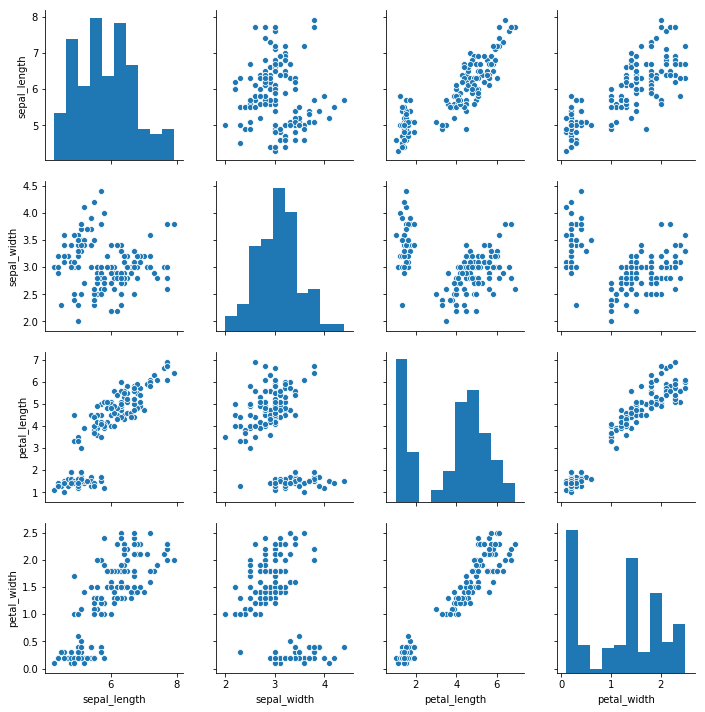Seaborn offers quick exploratory data analysis with relationships and individual distribution using a pair plot. A pair plot offers a single distribution using a histogram and joint distribution using a scatter plot:
# Load iris data using load_dataset() function
data = sns.load_dataset("iris")
# Create a pair plot
sns.pairplot(data)
# Show figure
plt.show()
This results in the following output:

In the preceding example, the Iris dataset is loaded using load_dataset() and that dataset is passed into the pairplot() function. In the plot, it creates an n by n matrix or a grid of graphs. The diagonal shows the distribution of the columns, and the non-diagonal elements of the grid show the scatter plot to understand the relationship among all the variables.
In the preceding few sections, we have seen how to use the Seaborn plots. Now, we will jump to another important visualization library, which is Bokeh. In the upcoming sections, we will draw interactive...






































































